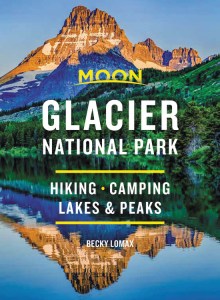Bicycling Going-to-the-Sun Road, Glacier National Park
Glacier’s Going-to-the-Sun Road ranks high on bucket lists of most cyclists. The ride dishes up a challenge along with a heavy dose of big scenery. Biking offers a way to intimately savor all of the detail that created the country’s only road that is a National Historic Landmark and National Civil Engineering Landmark. Arches and tunnels access natural wonders of waterfalls, wildlife, and glacier-carved peaks.
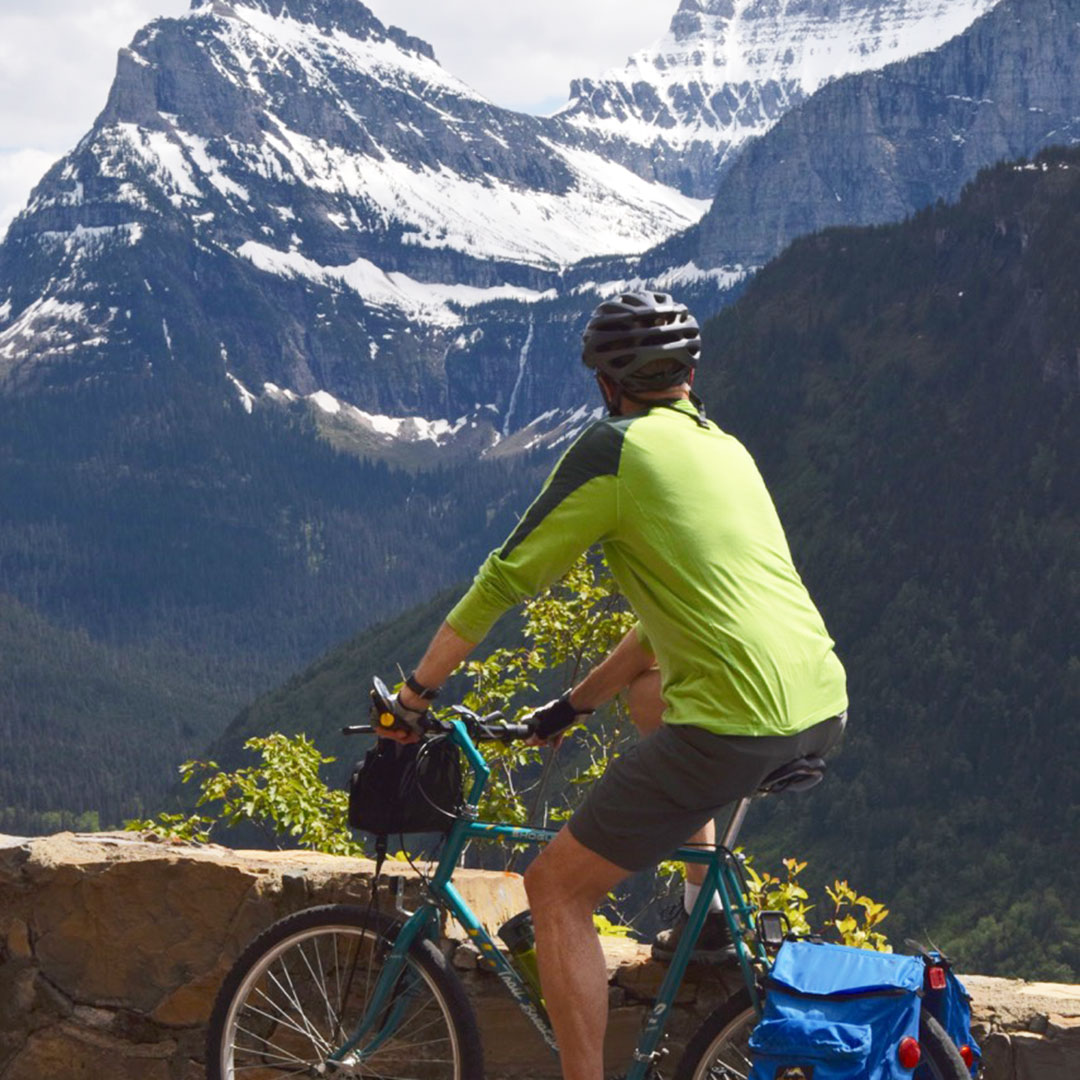
Riding the Sun Road requires stamina. Depending on launch points, it demands 16-32 miles of pedaling to reach Logan Pass. The western climb from Avalanche packs in 3,273 feet in elevation. The eastern ascent from St. Mary is less demanding at 2,185 feet. But either direction crams most of the uphill pedaling into 12 miles at a steady six-percent grade. It’s relentless enough to make the incline a contender with some of the Tour de France climbs.
To compound the difficulty, the road throws obstacles at riders: grates, debris, wildlife, water, and sometimes ice. Vehicles can also be a threat as most drivers are gawking at the scenery rather than watching for cyclists. Cars whiz by rider elbows with the shoulderless road affording no place to veer to the side.
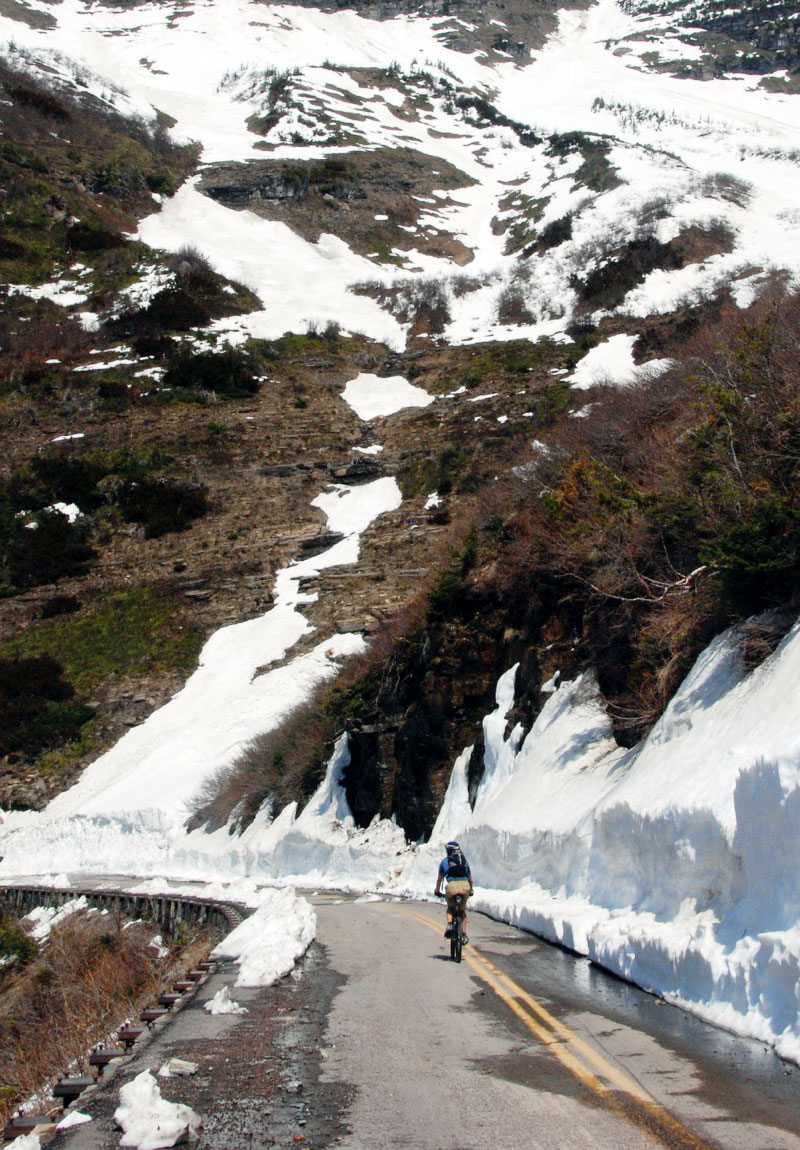
Bicycling Going-to-the-Sun Road Through the Seasons
Spring
The bicycle season launches mid-April when plows dig down to free the Sun Road of snow. Locals throng up the road during the two-month or so season when the gate bars vehicles. As spring plowing progresses further into the alpine, riders push higher and higher each week. By late May or early June, cyclists can usually reach Logan Pass. In upper segments, intimidating stretches lack yet-to-be-installed seasonal guardrails. Snow bordering the road creates a refrigerator effect for a chilly descent.
Once the west vehicle closure bumps to Avalanche Creek, a shuttle helps parking congestion by carrying bikes and riders from Lake McDonald Lodge to Avalanche. Spring riding cranks up on weekends with Mother’s Day bringing out scads of families, parents pulling Burleys, and kids on trikes. To help with planning, find daily plowing reports and biking restrictions online at www.nps.gov/glac.
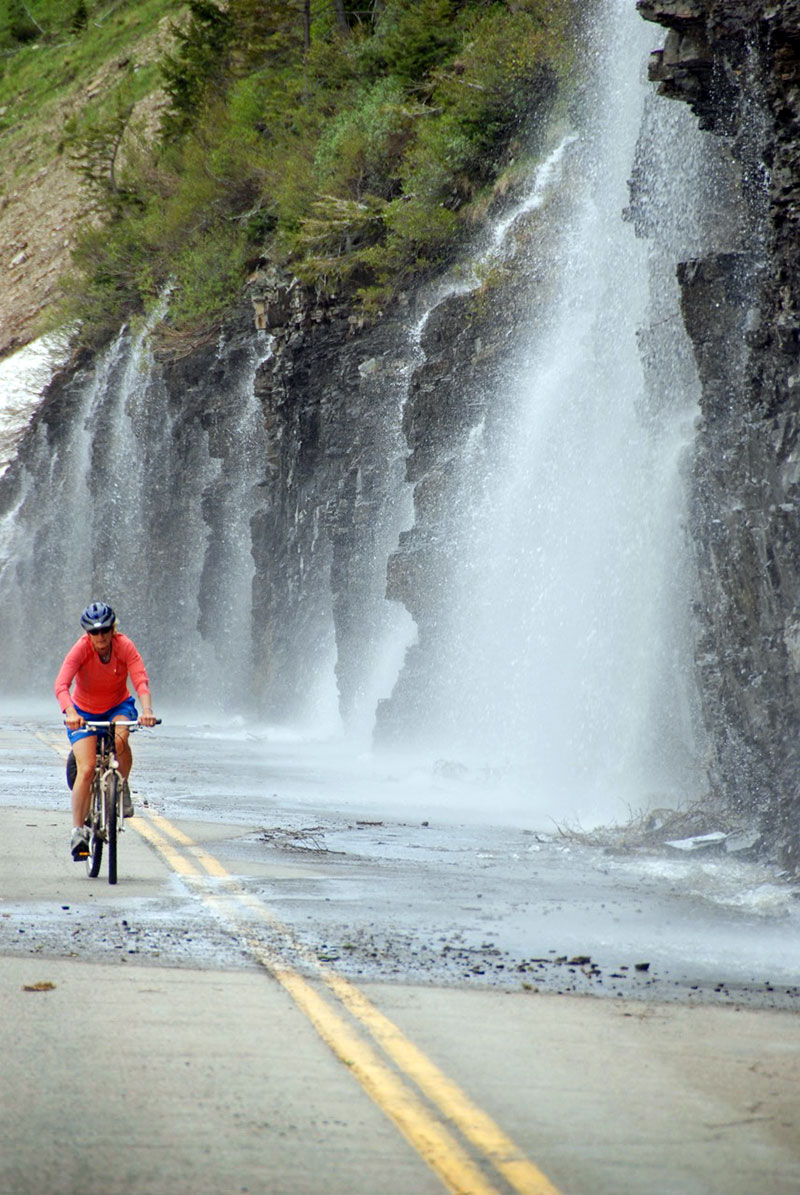
Summer
In summer, cyclists and vehicles jockey for position on the Sun Road. The narrow roadway squeezes with cars mid-day, forcing a ban on bicycles on two west side sections. Between 11am and 4pm, July 1 to Labor Day, bikes cannot go either direction along Lake McDonald nor climb uphill from Logan Creek to Logan Pass. For that reason, most cyclists leave Lake McDonald Lodge by 6:30am to be able to grind up to the pass before the daily bike closure.
In summer, early or late daylight hours offer riding with fewer cars on the road. Cyclists can pedal from one side of the Sun Road to the other and return via shuttles that can haul bikes.
Newsletter Signup
By clicking ‘Sign Up,’ I acknowledge that I have read and agree to Hachette Book Group’s Privacy Policy and Terms of Use
Fall
After Labor Day, bicycling restrictions disappear, and vehicle congestion diminishes. Cycling takes on the golden season with cottonwoods and aspens turning yellow. Riding continues until mid-October when the road closes again to vehicles. As long as snow permits, bikers can still push as far as possible.

Full Moon Rides
A local tradition, riders head up the Sun Road on full moon nights. Bikes must be outfitted with lights, but surrounding mountains glow by moonlight. The ride requires caution; at least one fatality has occurred.
Bicycle Rentals and Services
In summer, several shops in Apgar and West Glacier rent bikes. In spring and fall, find rentals only in Whitefish, about 35 minutes west of the park. To use your own bike when flying into the area, ship it to Glacier Cyclery (2406/862-6446), where they will put it together for your arrival.
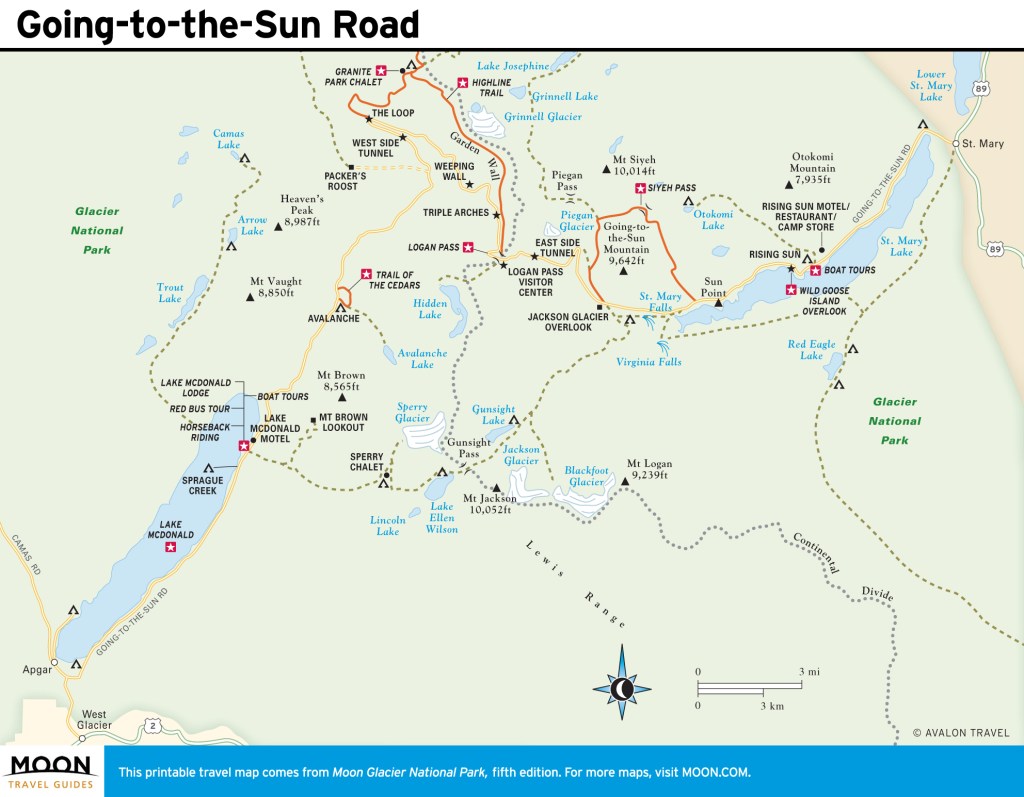
Newsletter Signup
By clicking ‘Sign Up,’ I acknowledge that I have read and agree to Hachette Book Group’s Privacy Policy and Terms of Use
Pin it for Later


